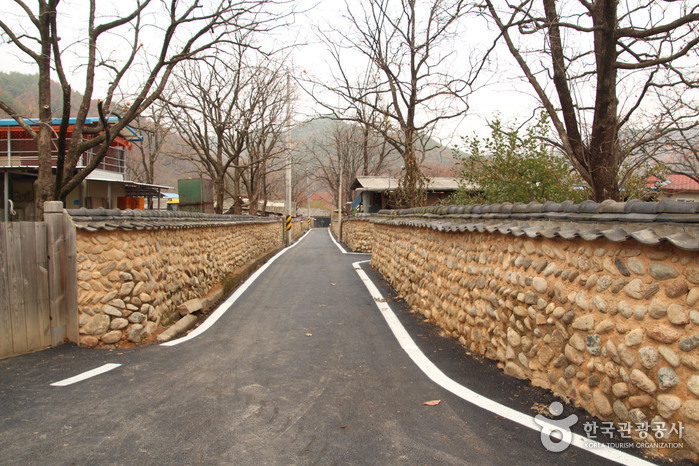Old Walls of Jijeon Village in Muju (무주 지전마을 옛 담장)
18.5Km 21998 2024-04-07
13, Gilbonji-gil, Muju-gun, Jeonbuk-do
+82-1899-8687
The Old Walls of Jijeon Village in Muju were mostly all built to mark the dividing line between houses, rather than to keep people out. The walls started out using mud and natural stones, but later changed to more square-shaped stones held together with cement and topped with Korean roofing tiles. The wall blends in harmony with the traditional houses of the village and the slowly flowing Namdaecheon Stream.
Muju Rafting (무주래프팅)
19.7Km 12915 2024-04-07
5-11, Jamdu-gil, Muju-gun, Jeonbuk-do
+82-63-322-7745
Muju Rafting resort is located on the upper Geumgang River and offers rafting, survival game, hiking, and fishing programs. The area is over 9,900 ㎡ in size and can accommodate lodging for up to 200 guests.
Haneullae Deulkkot Village (하늘내들꽃마을 [녹색농촌체험])
19.7Km 14563 2024-04-07
554, Cheoncheonbung-ro, Jangsu-gun, Jeonbuk-do
+82-63-353-5185
Situated in Jangsu, Jeollabuk-do, Haneullae Deulkkot Village, as the name suggests in Korean, it is a village nestled alongside the Cheoncheon stream (haneullae means ‘heaven creek’). The area is blessed with clear shallow creek, a green mountain and a field of wild flowers (deulkkot). In the small ecological park there is a 1.6 kilometer square building, a playground, a farm, a garden and a pond occupying nearly 10,000 square meters. Next to the grassy playground you’ll find a therapeutic pebble path made for walking on bare foot, towering trees scattered around the playground offering some cool shade and a few swing chairs attached to the tall trees. There are three wooden look-out stations also shaded by the platanus trees. And in a corner of the playground is a campground capable of accommodating up to ten tents. The pond is home to more than ten varieties of water plants, including the lotus and water hyacinth. There are also some colourful native water life, such as the Crucian carp, daces, dark chubs, Chinese minnows, loaches, freshwater snails and marsh snails.
The cafeteria is all made of pine. Visitors can breathe in the soothing woody aroma, take in the view of the park all while having a meal. You can go on hiking trails, rest afterwards with some tea then walk to the local market in a pavilion. Also, people can visit the local compost centre and earthworm breeding farm, as well as the nearby roosters, a protected species native to Korea.

![Haneullae Deulkkot Village (하늘내들꽃마을 [녹색농촌체험])](http://tong.visitkorea.or.kr/cms/resource/19/2515519_image2_1.jpg)
 English
English
 한국어
한국어 日本語
日本語 中文(简体)
中文(简体) Deutsch
Deutsch Français
Français Español
Español Русский
Русский